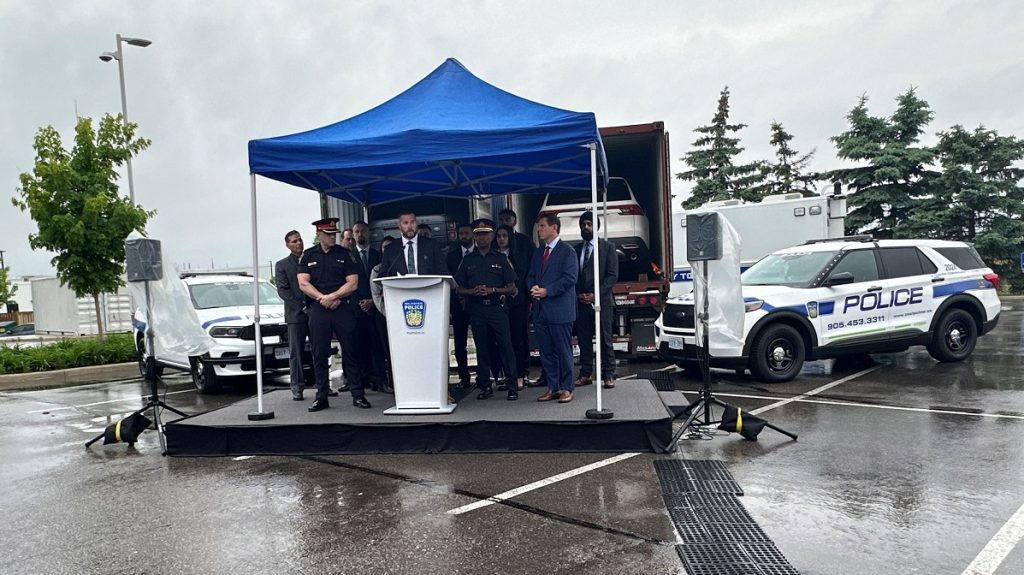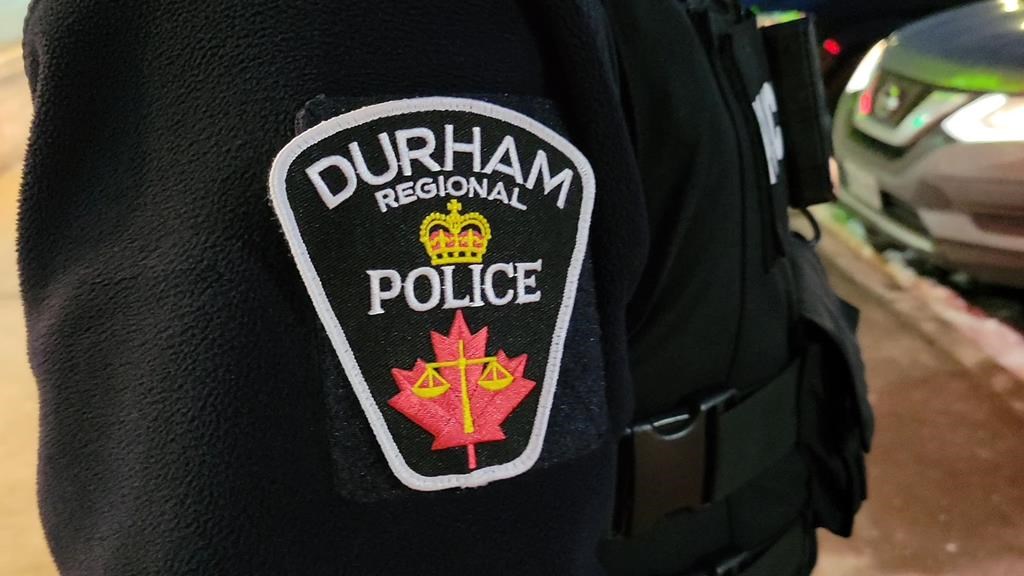OPP say massive cocaine seizure is largest in its history
Posted August 28, 2017 10:46 am.
Last Updated August 28, 2017 7:40 pm.
This article is more than 5 years old.
The cocaine was hidden inside hollowed-out quartzite stones packed onto shipping containers coming from Argentina – the drugs were concealed so well that even police dogs couldn’t detect them.
It was a tip from the public that ultimately led to the largest drug seizure in the Ontario Provincial Police’s history as the force carried out an investigation into an international cocaine smuggling ring with ties to Mexican cartels.
Altogether the force said it seized 1,062 kilograms of cocaine during a months-long investigation that culminated in July, according OPP deputy commissioner Rick Barnum.
The value of the seizure is estimated to be worth $60 million, with a street value of around $250 million.
“We’ve never seen anything like this,” Barnum said Monday at a news conference at OPP headquarters in Orillia, Ont., adding that tests revealed the cocaine tested 97 per cent pure and was destined for distribution across the country where it would be cut with other drugs to increase profits.
Police described how the cocaine was encased in rocks and packaged tightly to avoid detection. Watch the video below or click here.
The investigation – dubbed “Project Hope” – was conducted with the Canada Border Services Agency, Peel regional police and the United States Drug Enforcement Agency, among other organizations.
Barnum alleged those behind the operation – two Canadian citizens and one Costa Rican citizen who now face drug importation and drug trafficking charges – have been in business since 2014.
The men allegedly set up a front selling stones, Barnum said.
“I would say the business was definitely cocaine importation, there’s a lot more money in making that than there is in selling stones,” he said.
The force showed off hundreds of bundles of cocaine on Monday, as well as some of the stones that had contained them.
The stones would be cut open and cocaine, often bundled in one-kilogram packages, would be placed inside, police said. The stones would then be glued back together with cement, they said.
The police investigation began with a tip in March, Barnum said, and “good information” later led to a traffic stop of a transport truck north of Toronto on May 1 that led to the seizure of about 40 kilograms of cocaine.
Police then decided to test their dogs to see if their noses were up to snuff.
“Our dogs never detected the cocaine sealed inside,” Barnum said.
“It made it very, very difficult to detect, almost impossible, quite frankly, without the investigative phase of our work. It was detected through work from our intelligence operations in conjunction with Peel police, through good old police work following up leads through information we received.”
Police found drug caches in warehouses in Brampton and Stoney Creek, Ont., Barnum said.
The cocaine was transported in shipping containers from Argentina to Montreal, and then sent to Ontario, police allege.
“Argentina is not really a source country or production country for cocaine,” Barnum said, adding that the South American country is a transportation link to countries such as Peru, Paraguay and Bolivia where cocaine is made.
“I would say there are definitely connections to Mexico and Mexican cartels,” Barnum added.
There are Mexican cartel operatives currently in Ontario, Barnum alleged, although he wasn’t sure how many.
Luis Enrique Karim-Altamirano, 52, from Vaughan; Mauricio Antonio Medina-Gatica, 36, from Brampton; and Iban Orozco-Lomeli, 42, from Toronto, were charged with various drug trafficking offences on May 1.
Karim-Altamirano remains in custody pending a bail hearing on Wednesday. Medina-Gatica and Orozco-Lomeli have been released on bail.








